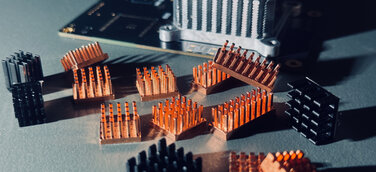The entire Bitaxe community and fans of home mining are very bullish on the Gamma, which is particularly efficient and fast. With just one ASIC processor (BM1370), speeds of three Bitaxe Ultra or two Bitaxe Supra are possible. It is not for nothing that the Antminer S21 Pro, its big brother, is very popular among industrial miners. Now available with the Bitaxe Gamma, also in the smallest format... Or rather, not available.

Services
Naked Lama... um, Gamma, I mean Bitaxe Gamma!
Bitaxe Gamma, the fourth generation of the ASIC-based home miners with low power consumption, currently the fastest and most efficient in its class. With the Gamma, 1.0-1.2 Th/s are possible, and for the first time the magic limit of 1,000 Gh/s is broken with just one processor.
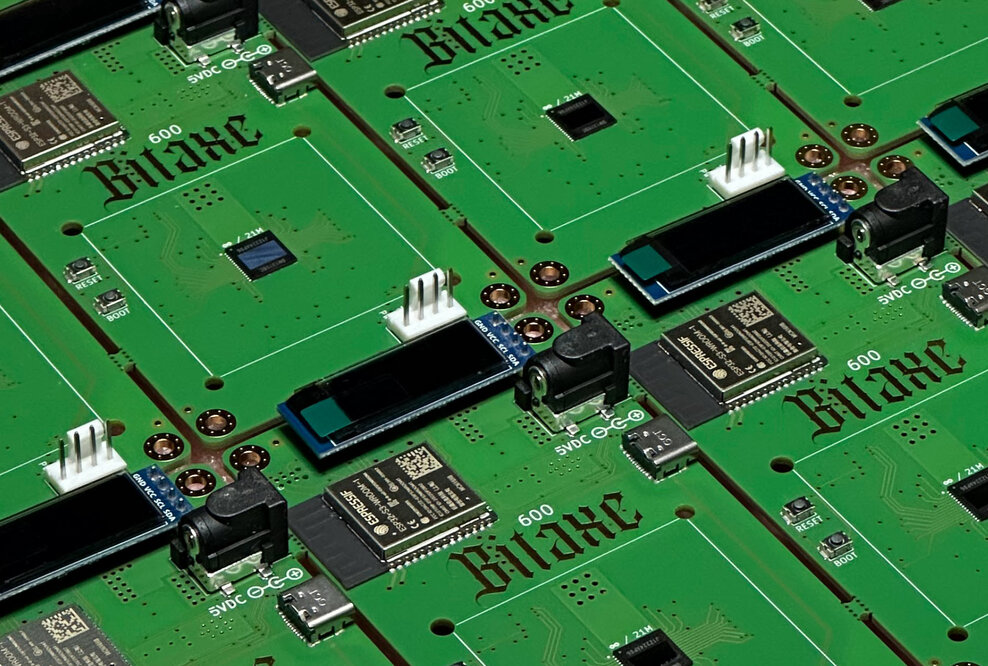
Not available because the manufacturers and dealers can't cope with the huge demand. Some dealers report that the quantity offered was completely sold out within an hour.
The retailers wanted to remedy the situation with waiting lists and advance orders, but even here demand is so high that even orders from August have still not yet been fulfilled. The lucky few among us who have managed to get hold of a Gamma are trying to place another order.... Bitaxe stacking is becoming the new trend.
But is the hype really justified? In this review of the Bitaxe Gamma, we will examine this in detail.
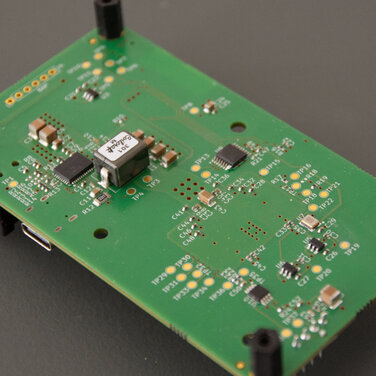
Availability
At the moment, it is difficult to predict where the next Bitaxe Gamma will be available. It is advisable to check all shops on the official legit list. I myself currently have an open pre-order that was placed some time ago, but unfortunately it is not possible to see when the actual delivery will take place.

However, there are also new providers that are dedicated to the topic of home mining and even offer the Gamma not just as a reseller, but actually produce it themselves.
Power Mining is actually a company that primarily deals with infrastructure for Bitcoin miners, with topics such as mining containers, PDUs and electrical distribution according to industrial standards. This innovative company comes from Latvia, the Bitaxe Gamma SMT assembly takes place in its own workshops in Estonia, where the units are assembled and tested by electrical engineers under laboratory conditions before they are released for sale.
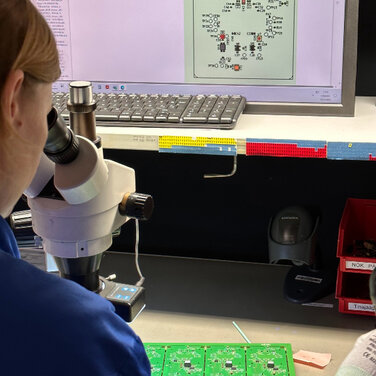
I was able to get the first prototype batch, which is very cool for many reasons. For one thing, I get to test the first batch for stability and actually try out the Bitaxe Gamma in detail.
The guys and girls from Latvia are really very fast and were already able to fix some bugs during production that the open source Bitaxe Gamma still has as an early adopter. On the positive side, the miners are made in the EU, so they are quickly available in Europe. If you have to wait a long time on a waiting list, check out these guys... You might be lucky and be able to order a Gamma directly.
Preface
In times when many are trying to be modern and fancy with the PCB board, ‘Power Mining’ is going back to the roots. I think it's a tribute to the actual beginnings of hardware, where PCBs were mostly green or dark yellow. The Gamma gives off really nice vintage vibes, even though it is the most modern generation of ASIC-based mini home miners I just love this green, simple, plain, radically minimalist.

But don't worry, it won't stay green. A prototype of the gamma from the very first batch is being tested here. I heard that the customer version will have a plain black PCB.
As discussed in the article ‘Cracking nuts with the Bitaxe while following the white rabbit’, a Bitaxe Supra can be overclocked very well even with air cooling, and thus significantly increase the hash rate, up to 1337 Gh/s on average. With better PSU cables and thus stabilised voltage, even 1.4 Th/s are possible with air cooling, which is actually an absolute world record.
The Bitaxe Gamma promises 1-1.2 Th/s already with the standard settings, which is a phenomenally high performance from just one ASIC processor. Thus, the potential for optimisation and overclocking should be truly overwhelming.
But now to the actual topic: what can a Gamma achieve with air cooling?
Test environment
I have come up with a few test scenarios that I think would make sense. Since many retailers still ship the Gamma, which produces significantly more heat than the Supra, with inadequate small yellow aluminium coolers and loud, ineffective fans, this scenario will also be tested.
Unfortunately, I don't have the Argon ‘THRML 60mm Radiator Cooler’ yet, but I think my 139.5 gram copper monster, the ‘Ötzi’, is definitely a reference cooler and can be compared to the Argon. It's also handy that the Gamma can be tested under the exact conditions as the Bitaxe Supra, which easily achieves 1,337 Gh/s.
Thermal Grizzly Kryonaut Extreme will be the link between the ‘Ötzi’ and the BM1370. A thermal compound with an extremely high thermal conductivity of 14.2 W/m*K, it should be the perfect connection between 100% copper and 100% ASIC.
The fans used are the Noctua NF-A4x20 5V PWM and Noctua NF-A6x25 5V PWM. Which is also a reference model in terms of fans in a small format and optimally supports the Ice Tower but also the copper cooler, or are significantly quieter with a similar cooling capacity.
To keep the voltage stable and ensure a proper supply to the gamma, the MEAN WELL LRS-200-5 5V 40A comes into play as a power supply with sufficient reserve, connected with 16 AWG power cables.
A great many test series were carried out with different coolers and fans. The most exciting findings are to be combined with the yellow standard cooler and the 10mm or 20mm high 40x40 fan. This configuration is the most common type that can and probably will be bought from retailers. But also the combination with the Noctua NF-A4x20 5V PWM fan, the results with the yellow aluminium cooler are at least surprising.
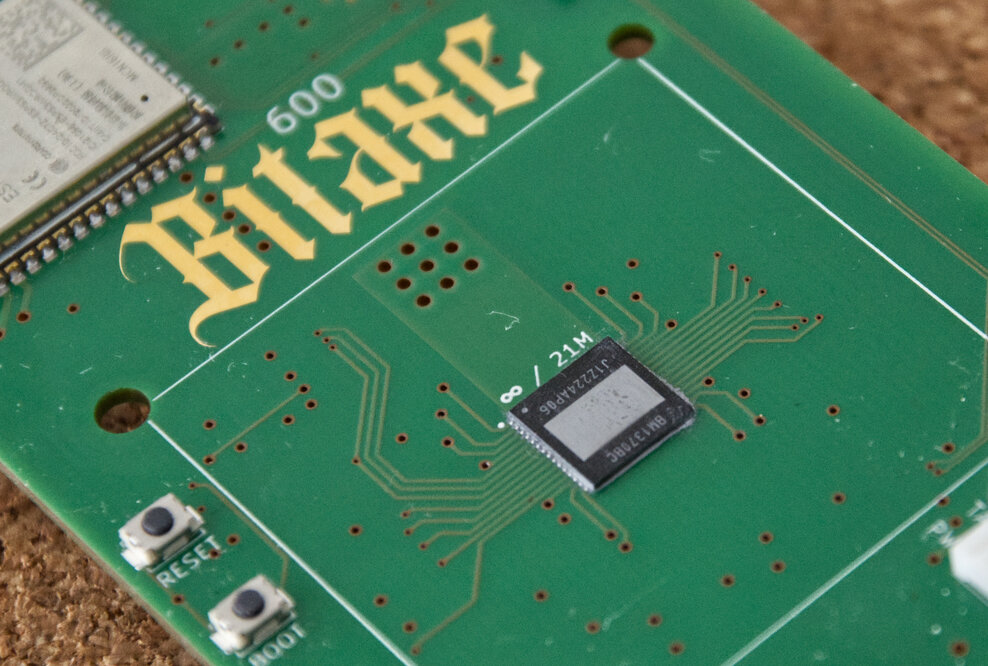
I thought I'd test the Bitaxe Gamma in the RAW version first, which means no coolers on the mosfets, in the state it was delivered by the dealer. Testing with default values, some intermediate values when overclocking and then the maximum possible. However, this article is not about overclocking, but about testing the Bitaxe Gamma as such. Moderate overclocking is included in the test series to get an idea of what a Gamma can actually achieve.
After that, the same test with copper coolers on the hottest mosfets. Finally, the copper cooler with a net weight of 139.5 g would be used as a reference cooler to see what the Gamma can really achieve with air cooling. The OC'axe case, the first prototype variant of which is currently being developed, will be used as the cooling concept.
To ensure that the test remains fair, the ‘ck solo mining pool’ will continue to be used for testing.
The default clock rates at delivery, minimum, medium and maximum clock rates offered by AxeOS are tested. Regarding AxeOS, the current firmware version 2.3.0 is used, of course. For all tests, the automatic air control was deactivated and set to 100% to ensure that the same conditions apply to all test series.
Test sequences
Caution, this may be a bit dry and boring, but just as exciting. Lots of numbers and figures, hash rate, power consumption and clock rates. The tests were carried out in a room where the temperature was 22-23°C, so that you can roughly estimate that.
Standard cooler with 10 mm unbranded fan
This is actually a variant that is offered in various shops, it is cheap. You could almost say cheap in a negative way... In this test, the fan spun at 6500 RPM, so silent operation remained wishful thinking.
Mhz | Voltage | Avg. Th/s | J/Th | Power | ASIC Volt. req. | ASIC Volt. mes. | ASIC Temp | V. Reg Temp. | Hint |
|---|---|---|---|---|---|---|---|---|---|
400 | 1,150 | 0.816 | 16,37 | 13,7 | 1,15 | 1,11 | 47,9 | 55,0 | 0.5 h run |
525 | 1,150 | 1.070 | 17,30 | 19,2 | 1,15 | 1,11 | 70,4 (fail) | 73,0 | 3 min run |
596 | 1,200 | - | - | - | - | - | 74,8 (fail) | 78,0 | 1 min run |
625 | 1,250 | - | - | - | - | - | - | - | - |
650 | 1,300 | - | - | - | - | - | - | - | - |
675 | 1,325 | - | - | - | - | - | - | - | - |
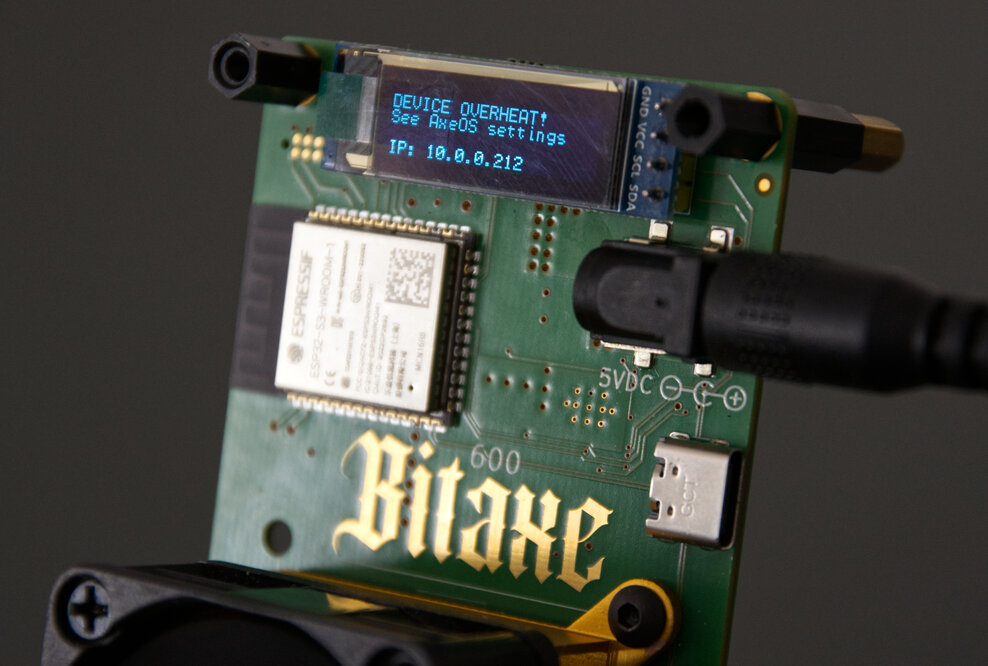
As can be seen from the table, this cooling solution is not even able to operate the default values, set in the AxeOS config, in a stable manner. 490 Mhz would be another variant, but was not tested here and after all, one expects from a new Bitaxe generation that one can achieve a higher hash rate and not the other way around.
Standard cooler with 20 mm noname fan
This variant is probably the most common one offered, it is a bit better than with a 10mm no-name fan, that's for sure. At a slightly relaxed 6000 RPM, silent fans won't be happy here either.
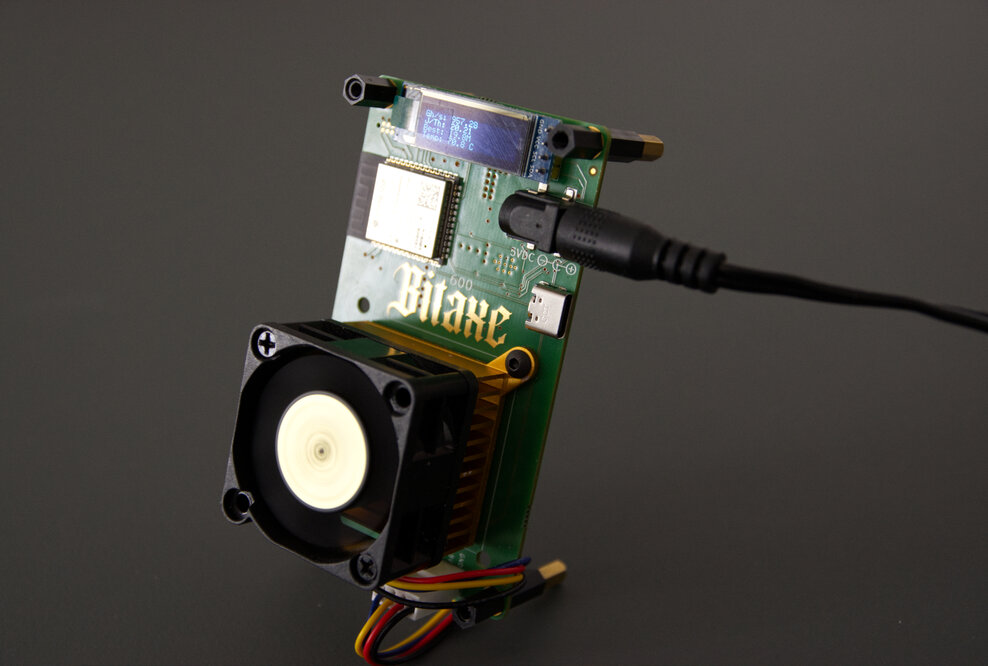
Mhz | Voltage | Avg. Th/s | J/Th | Power | ASIC Volt. req. | ASIC Volt. mes. | ASIC Temp | V. Reg Temp | Hint |
|---|---|---|---|---|---|---|---|---|---|
400 | 1,150 | 0.816 | 16,29 | 13,6 | 1,15 | 1,11 | 49,3 | 61,0 | 0.5 h run |
525 | 1,150 | 1.070 | 17,32 | 19,4 | 1,15 | 1,11 | 74,1 (fail) | 74,0 | 3 min run |
596 | 1,200 | - | - | - | - | - | 73,7 (fail) | 79,0 | 1 min run |
625 | 1,250 | - | - | - | - | - | - | - | - |
650 | 1,300 | - | - | - | - | - | - | - | - |
675 | 1,325 | - | - | - | - | - | - | - | - |
Unfortunately, with this combination, it was also not possible to operate the Gamma with default settings. After about three minutes, the Gamma overheated and went into emergency mode to protect itself.
Standard cooler with Noctua NF-A4x20 5V PWM
Perhaps a little surprising that the Noctua in this combination also can't manage the waste heat. But it should be noted that the Noctua primarily enables quieter operation and does not deliver as much CFM as the cheap no name fans that have significantly higher RPM.

Mhz | Voltage | Avg. Th/s | J/Th | Power | ASIC Volt. req. | ASIC Volt. mes. | ASIC Temp | V. Reg Temp | Hint |
|---|---|---|---|---|---|---|---|---|---|
400 | 1,150 | 0.816 | 15,83 | 13,8 | 1,15 | 1,11 | 52,4 | 61,0 | 0.5 h run |
525 | 1,150 | 1.070 | 18,19 | 19,1 | 1,15 | 1,11 | 71,3 (fail) | 72,0 | 2 min run |
596 | 1,200 | - | - | - | - | - | - | - | - |
625 | 1,250 | - | - | - | - | - | - | - | - |
650 | 1,300 | - | - | - | - | - | - | - | - |
675 | 1,325 | - | - | - | - | - | - | - | - |
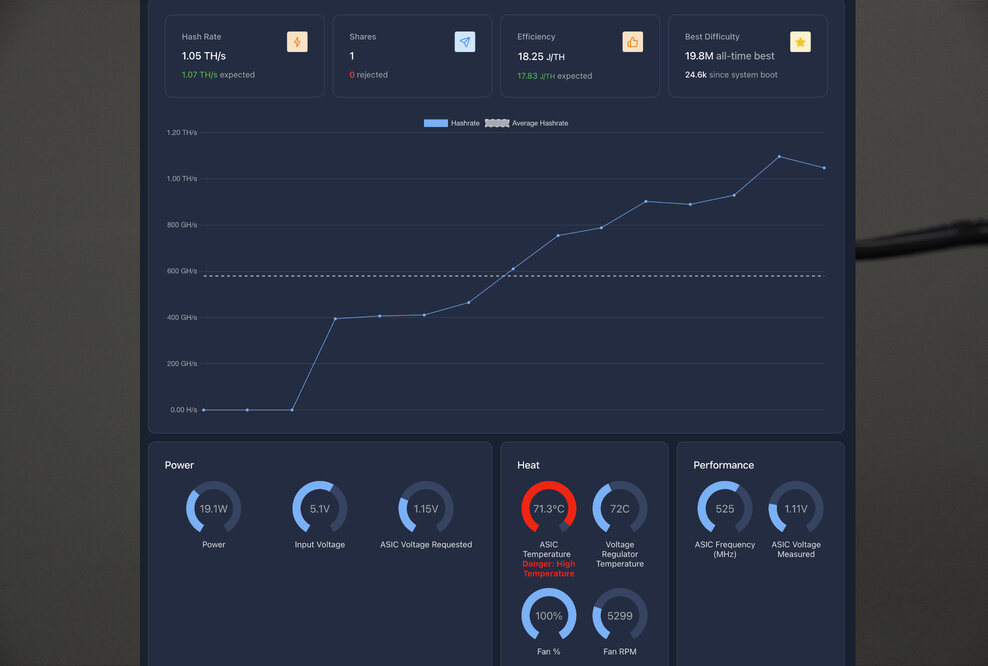
Nevertheless, I would have expected that at least the standard clock rate of the Bitaxe Gamma could have been maintained here. Unfortunately, that didn't work.
Improved cooler with 10 mm no-name fan
Aluminium coolers are much more solid in the size 40 x 40 x 40mm, they could easily absorb more heat and release it through higher and thicker cooling pins. In fact, it is a very cost-effective alternative to the yellow coolers listed above, costing around 3-5 EUR, depending on where you order them.
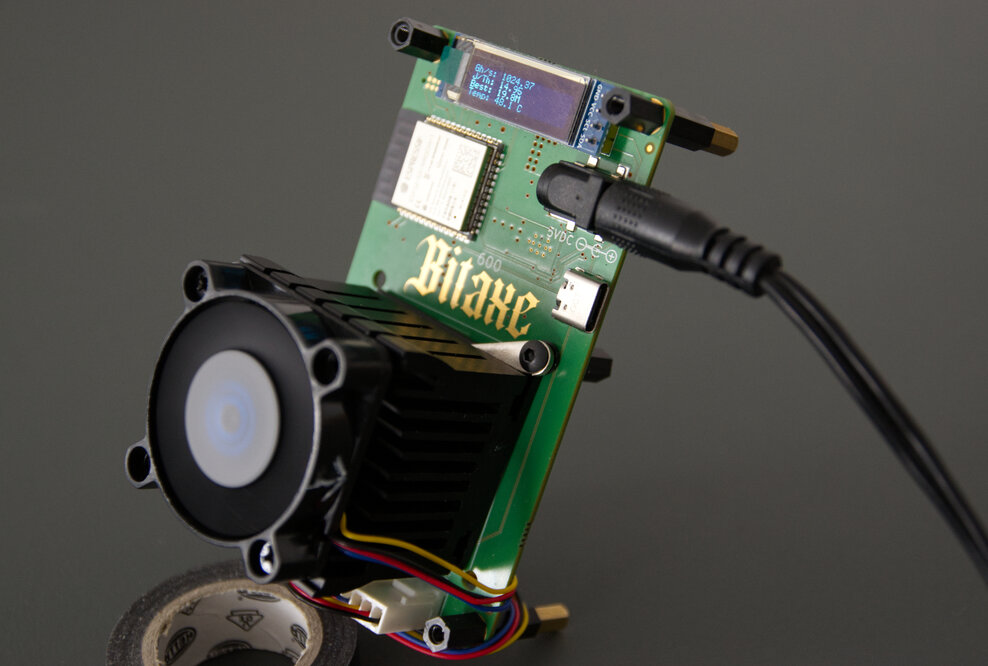
Mhz | Voltage | Avg. Th/s | J/Th | Power | ASIC Volt. req. | ASIC Volt. mes. | ASIC Temp | V. Reg Temp | Hint |
|---|---|---|---|---|---|---|---|---|---|
400 | 1,150 | 0.816 | 12,97 | 11,1 | 1,15 | 1,12 | 44,6 | 48,0 | 0.5 h run |
525 | 1,150 | 1.070 | 13,82 | 15,2 | 1,15 | 1,12 | 47,6 | 58,0 | 0.5 h run |
596 | 1,200 | 1.220 | 17,15 | 21,1 | 1,20 | 1,16 | 71,6 (fail) | 78,0 | 5 min run |
625 | 1,250 | - | - | - | - | - | 72,6 (fail) | - | 1 min run |
650 | 1,300 | - | - | - | - | - | - | - | - |
675 | 1,325 | - | - | - | - | - | - | - | - |
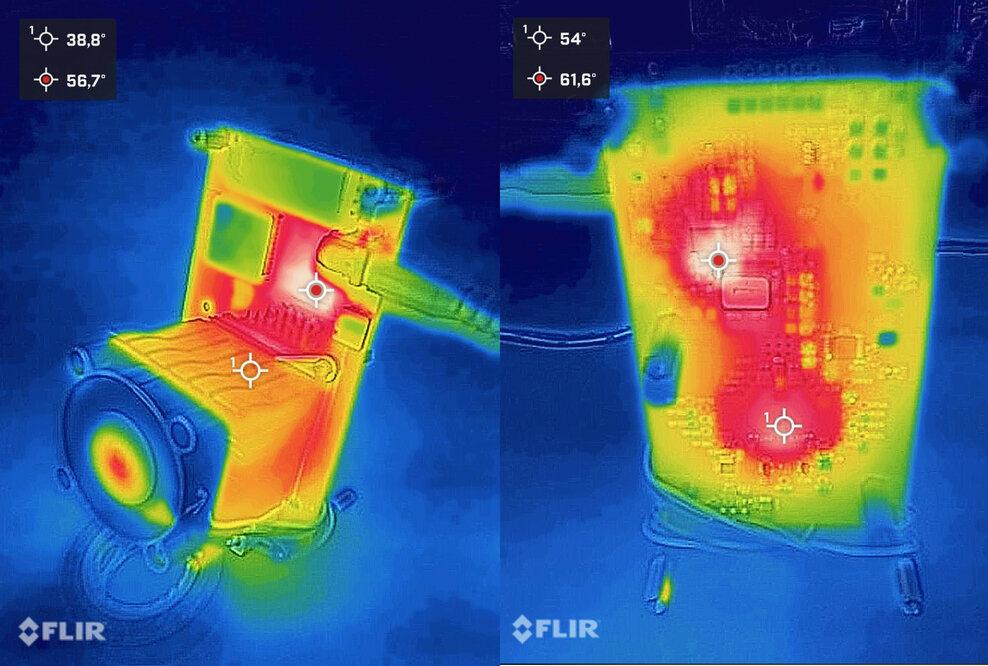
In fact, I had hoped that this small improvement in the form of a very affordable cooler would at least maintain the standard clock speed. It worked, but overclocking is absolutely out of the question with this combination. At 6500 RPM, it is also slightly passively aggressive in terms of noise, unless you like it loud, very loud.
Improved cooler with 20mm no-name fan
What worked with a 10 mm no-name fan should work much better with a 20 mm model, shouldn't it?
Mhz | Voltage | Avg. Th/s | J/Th | Power | ASIC Volt. req. | ASIC Volt. mes. | ASIC Temp | V. Reg Temp | Hint |
|---|---|---|---|---|---|---|---|---|---|
400 | 1,150 | 0.816 | 12,62 | 10,7 | 1,15 | 1,11 | 42,1 | 44,0 | 0.5 h run |
525 | 1,150 | 1.070 | 12,38 | 15,1 | 1,15 | 1,11 | 46,7 | 57,0 | 0.5 h run |
596 | 1,200 | 1.220 | 18,86 | 21,5 | 1,20 | 1,16 | 72,4 (fail) | 73,0 | 5 min run |
625 | 1,250 | - | - | - | - | - | 73,4 (fail) | - | 1 min run |
650 | 1,300 | - | - | - | - | - | - | - | - |
675 | 1,325 | - | - | - | - | - | - | - | - |
The values are actually a bit better, you could even run the ASIC at 596 Mhz for about 4-5 minutes, after which it went back to emergency mode due to overheating.
Improved cooler with Noctua NF-A4x20 5V PWM
As always, I hope that using a premium fan will create a certain magic and get things working that didn't work before.
Mhz | Voltage | Avg. Th/s | J/Th | Power | ASIC Volt. req. | ASIC Volt. mes. | ASIC Temp | V. Reg Temp | Hint |
|---|---|---|---|---|---|---|---|---|---|
400 | 1,150 | 0.816 | 14,74 | 12,1 | 1,15 | 1,11 | 44,9 | 52,0 | 0.5 h run |
525 | 1,150 | 1.070 | 15,05 | 16,7 | 1,15 | 1,11 | 53,2 | 64,0 | 0.5 h run |
596 | 1,200 | 1.220 | 17,98 | 22,3 | 1,20 | 1,16 | 72,8 (fail) | 74,0 | 2 min run |
625 | 1,250 | - | - | - | - | - | - | - | - |
650 | 1,300 | - | - | - | - | - | - | - | - |
675 | 1,325 | - | - | - | - | - | - | - | - |
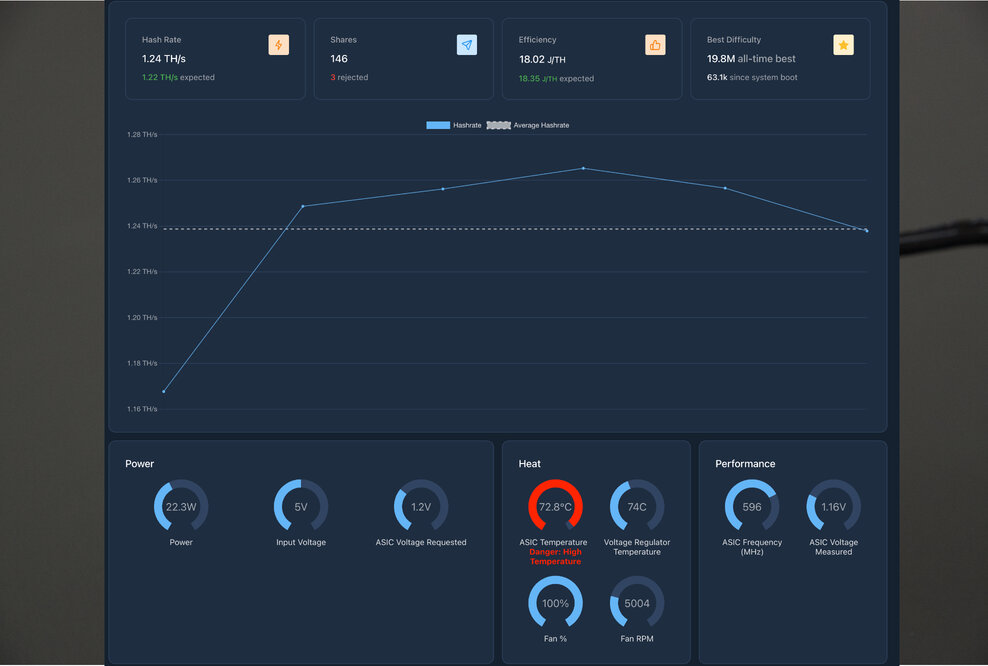
But unfortunately, as before, it got quieter, but the Noctua was not able to dissipate the enormous waste heat of the slightly better cooler. However, normal operation with standard values is feasible, just keep in mind that it is not exactly quiet either. The Noctua at 100% is also not a quiet guy, only the frequency is significantly more bearable and softer than with no name products.
Ice Tower with 20 mm no-name fan
I was particularly excited about this variant of the significantly better cooling concept. The test with a 10 mm no-name fan was not carried out, because of the idea – anyone who buys an Ice Tower will not use a 10mm fan. 20 mm fans are the perfect choice for the Ice Tower, so let's start with the no-name fan first.
Mhz | Voltage | Avg. Th/s | J/Th | Power | ASIC Volt. req. | ASIC Volt. mes. | ASIC Temp | V. Reg Temp | Hint |
|---|---|---|---|---|---|---|---|---|---|
400 | 1,150 | 0.816 | 14,70 | 12,1 | 1,15 | 1,11 | 47,8 | 47,4 | 0.5 h run |
525 | 1,150 | 1.070 | 13,81 | 15,6 | 1,12 | 1,15 | 48,2 | 61,1 | 0.5 h run |
596 | 1,200 | 1.220 | 15,19 | 19,9 | 1,20 | 1,16 | 52,6 | 71,2 | 0.5 h run |
625 | 1,250 | 1.270 | 17,41 | 23,5 | 1,25 | 1,21 | 61,4 | 78,4 | 0.5 h run |
650 | 1,300 | 1.330 | 20,14 | 27,8 | 1,30 | 1,26 | 71,1 (fail) | 84,7 | 5 min run |
675 | 1,325 | 1.380 | 21,63 | 30,5 | 1,32 | 1,29 | 73,5 (fail) | 93,8 | 1 min run |
For the first time and after so many tests and disappointments, the Bitaxe Gamma could be operated stably with standard settings, even overclocked. Within the AxeOS options, all the clock frequencies offered could be selected and the ASIC ran without problems. Outside the AxeOS, however, it stopped, which was to be expected... but it did work at 650 Mhz for a magical 5 minutes.
Ice Tower with Noctua NF-A4x20 5V PWM
I was very bullish about the test with the Ice Tower and the Noctua fan, this combination has already produced excellent results on the Bitaxe Ultra and Bitaxe Supra.
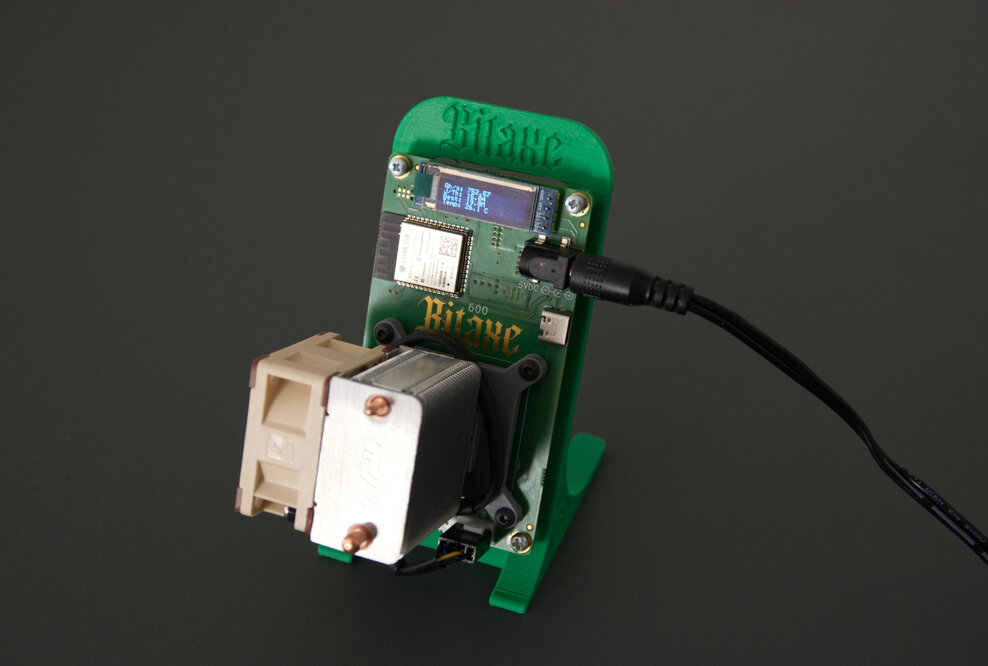
Mhz | Voltage | Avg. Th/s | J/Th | Power | ASIC Volt. req. | ASIC Volt. mes. | ASIC Temp | V. Reg Temp | Hint |
|---|---|---|---|---|---|---|---|---|---|
400 | 1,150 | 0.816 | 13,39 | 12,8 | 1,15 | 1,11 | 43,4 | 55,1 | 0.5 h run |
525 | 1,150 | 1.070 | 14,73 | 16,5 | 1,15 | 1,11 | 41,2 | 69,0 | 0.5 h run |
596 | 1,200 | 1.220 | 13,72 | 18,8 | 1,20 | 1,16 | 43,8 | 70,2 | 0.5 h run |
625 | 1,250 | 1.270 | 16,34 | 22,3 | 1,25 | 1,22 | 48,2 | 78,1 | 0.5 h run |
650 | 1,300 | 1.330 | 18,99 | 26,2 | 1,30 | 1,26 | 63,9 | 89,1 | 0.5 h run |
675 | 1,325 | 1.380 | 20,99 | 29,8 | 1,32 | 1,29 | 74,9 (fail) | 99,2 | 5 min run |
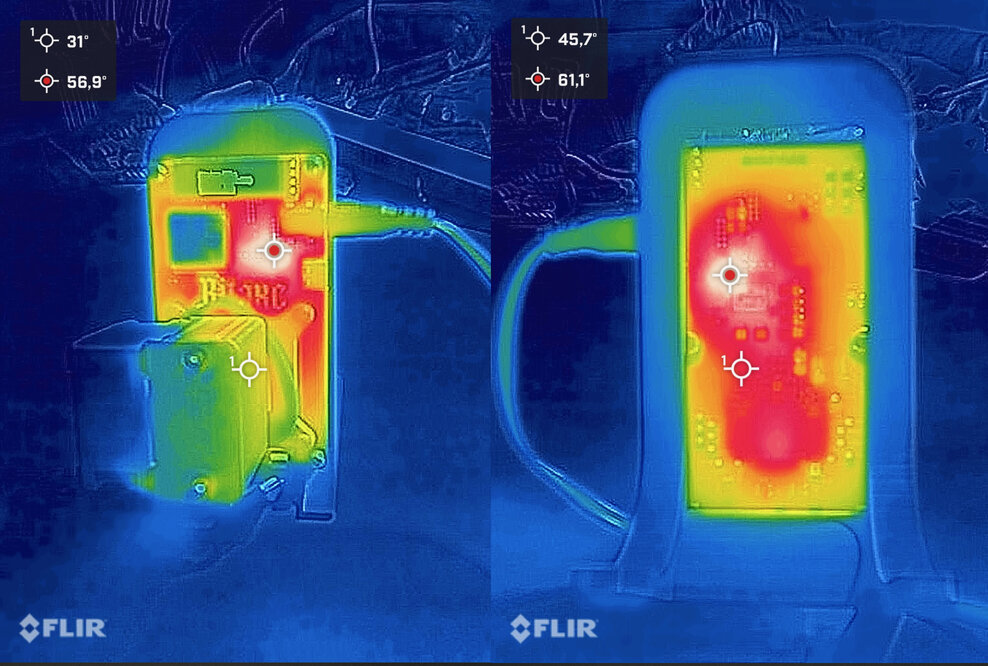
In fact, it was only in this first test that it convinced us with its absolutely stable operation. Even a strong overclocking to 650 Mhz worked. However, it should be noted that the ASIC was operating at the limit of the permissible temperature of 70°C. The temperature was also clearly too high for the regulators and should not be operated continuously in this form, otherwise you risk a defect.
In the case of ‘Power Mining’, the Bitaxe Gamma actually comes with the Ice Tower and Noctua fan included at no extra cost. This is really a good decision because this generation of Bitaxe definitely needs a much more effective cooling solution than the Supra did (although the Supra's cheap cooling solutions were already very borderline).
This would also be my absolute recommendation for the minimum requirements for the Bitaxe Gamma, at least an Ice Tower with the Noctua fan. There is no longer as much risk of the small miner overheating.
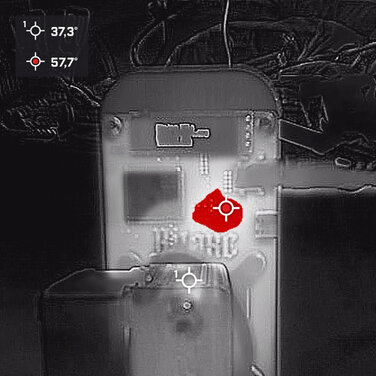
Ice Tower with Noctua NF-A4x20 5V PWM and heatsinks
With better cooling solutions, many people will also try to use heat sinks to significantly accelerate heat dissipation. I have attached sufficiently dimensioned copper coolers here on the hottest spots and on the mosfets. An aluminium heat sink was sufficient for the big guy on the back, but it has significantly longer pins than the usual small coolers.
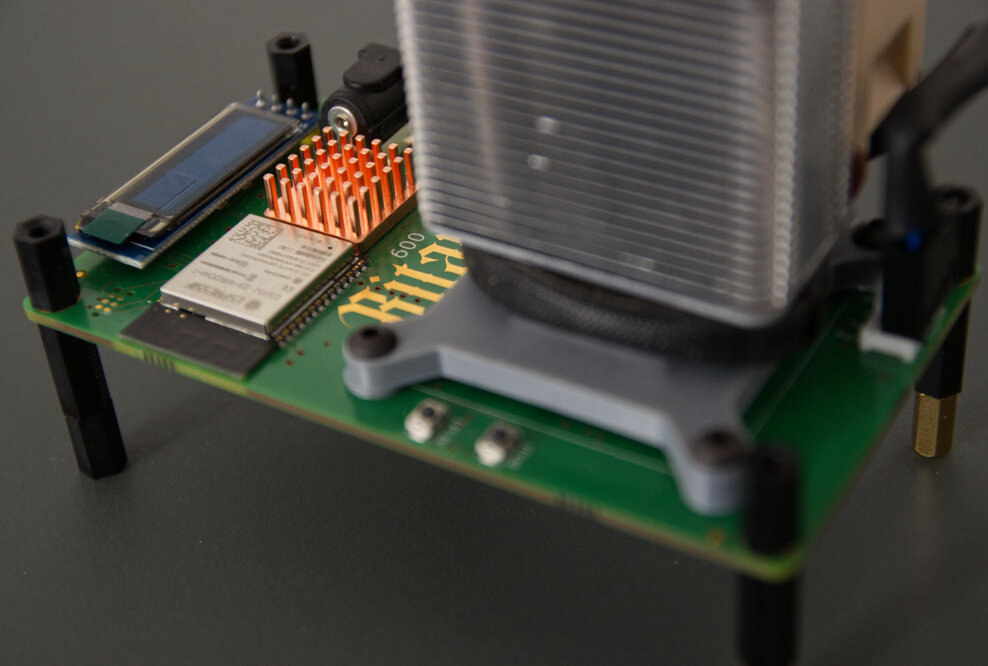
Mhz | Voltage | Avg. Th/s | J/Th | Power | ASIC Volt. req. | ASIC Volt. mes. | ASIC Temp | V. Reg Temp | Hint |
|---|---|---|---|---|---|---|---|---|---|
400 | 1,150 | 0.816 | 12,59 | 11,7 | 1,15 | 1,11 | 42,5 | 51,0 | 0.5 h run |
525 | 1,150 | 1.070 | 12,56 | 15,7 | 1,15 | 1,11 | 42,7 | 61,0 | 0.5 h run |
596 | 1,200 | 1.220 | 16,64 | 20,8 | 1,20 | 1,16 | 52,1 | 71,0 | 0.5 h run |
625 | 1,250 | 1.270 | 18,74 | 25,3 | 1,25 | 1,22 | 71,1 (fail) | 83,0 | 5 min run |
650 | 1,300 | - | - | - | - | - | - | - | - |
675 | 1,325 | - | - | - | - | - | - | - | - |
Surprised by the results? Yes, I was also very surprised, in a negative way.
At first, I assumed that there was an error, so I reapplied the thermal paste and reattached the heat sinks. The result remained the same, even with the third run. I simply could not explain to myself why the Gamma worked without heat sinks without any problems. Unfortunately, I couldn't find a real explanation, but thermal photos and the measurement parameters indicated that the heat is dissipated much faster and thus the hottest spots should be cooled better.
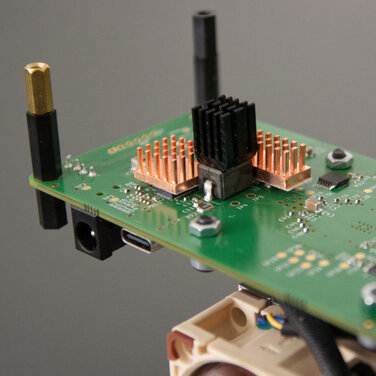

I assume that the heat sinks have caused a thermal blockage. The heat from the hot mosfets and areas was better transferred to the coolers, which accepted it gratefully. But they could not dissipate the absorbed amount of heat fast enough, so the mosfets overheated and the hot spots on the PCB even more. In fact, it turned out to be a counterproductive optimisation. More on this in a few lines.
139.5g of copper happiness with Noctua NF-A6x25 5V PWM and heatsinks
I was particularly looking forward to this test, simply brute force with a massive copper cooler... as the saying goes, ‘just more copper is better than just copper’. The already familiar player in the form of an old Northbridge cooler, brought back to life after more than 13 years
I was already impressed by the test series with the Ice Tower when it was first possible to operate the gamma absolutely stably and to enjoy the extremely high hash rate.
What can an old copper cooler do that modern coolers can't?
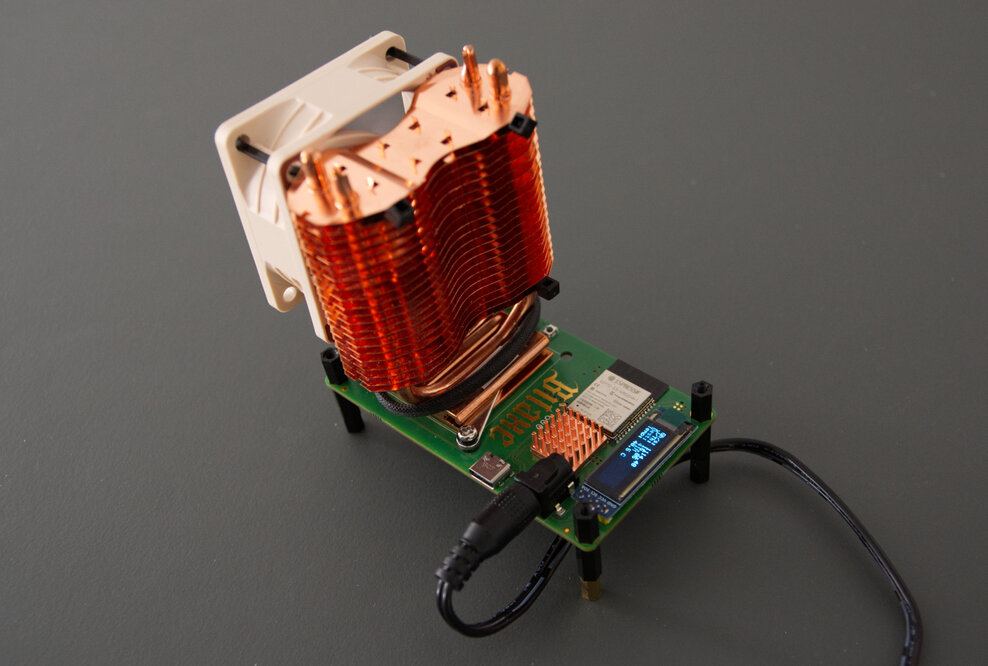
Mhz | Voltage | Avg. Th/s | J/Th | Power | ASIC Volt. req. | ASIC Volt. mes. | ASIC Temp | V. Reg Temp | Hint |
|---|---|---|---|---|---|---|---|---|---|
400 | 1,150 | 0.816 | 14,14 | 11,1 | 1,15 | 1,12 | 26,5 | 51,0 | 0.5 h run |
525 | 1,150 | 1.070 | 12,99 | 13,9 | 1,15 | 1,12 | 41,4 | 56,0 | 0.5 h run |
596 | 1,200 | 1.220 | 14,43 | 17,6 | 1,20 | 1,17 | 45,3 | 65,0 | 0.5 h run |
625 | 1,250 | 1.270 | 16,30 | 20,7 | 1,25 | 1,21 | 49,4 | 82,0 | 0.5 h run |
650 | 1,300 | 1.330 | 13,15 | 24,2 | 1,30 | 1,26 | 51,3 | 86,0 | 0.5 h run |
675 | 1,325 | 1.380 | 18,87 | 28,3 | 1,35 | 1,32 | 55,7 | 93,0 | 0.5 h run |
I expected a positive effect, but I couldn't have imagined that it would be so extremely good. An incredible 675 Mhz, absolutely stable, not even 30 watts reached and this excellent ASIC temperature. Only the voltage regulator longed for more love, here it had actually reached a range where it is not recommended for continuous operation.
You should also keep in mind that the ASIC has received optimal cooling and the Mosfets could absorb and release the waste heat faster, but the back of the Gamma was not cooled by an external or additional fan. But this must be done, it was already determined when operating the Supras at light overclocking. The Gamma is an absolute hothead and not only the ASIC but especially the backside, here active cooling must be done and completely independently of which cooling solution you choose. As soon as you go up even one level and go outside the default values of 525 Mhz, everything heats up extremely and a stable and long-term operation of the small miner becomes very difficult.
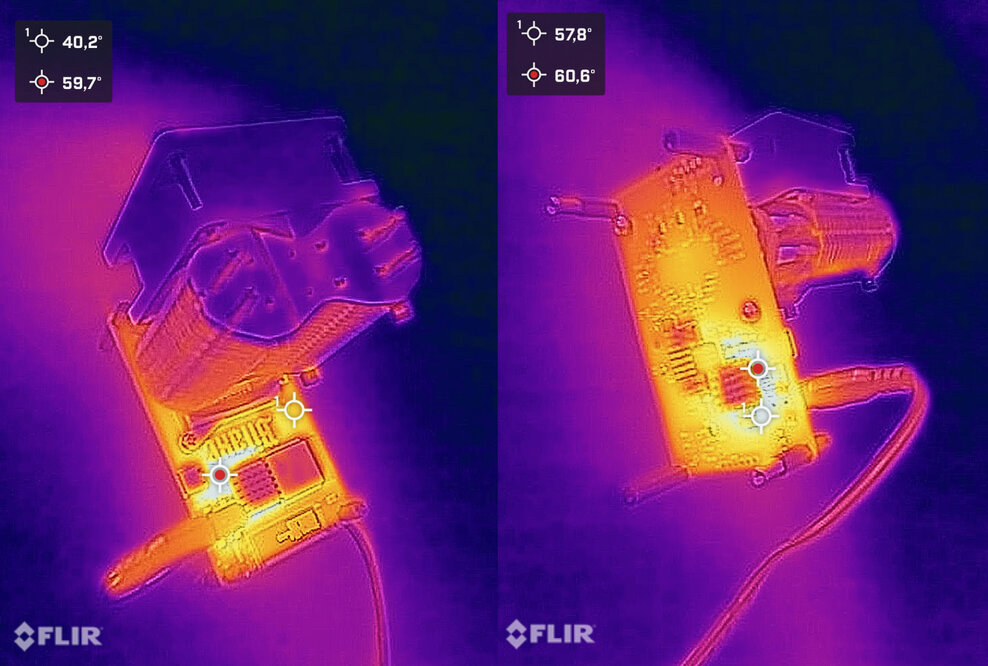
In fact, I didn't think about cooling at the back at all during my tests, or rather I overlooked it. I had in the back of my mind that a cooling concept in the form of the OC'axe is already available and has so far been able to outperform everything as long as it is purely air cooling. So it may well be that the Ice Tower with a Noctua fan already covers everything perfectly, at least within the variants offered in AxeOS.
OC'axe Boost: Ice Tower with Noctua NF-A4x20 5V PWM
The minimal cooling solution for the gamma operation should be the Ice Tower with a Noctua fan, optimally a copper cooler with a Noctua fan would be. Alternatively, the Argon cooler, which unfortunately I don't have at the moment, but this should deliver similar results to the pure copper solution, is cost-effective.
The question that kept coming to my mind was whether the cooling performance listed above could be increased by using the OC'axe? And if so, what would the results be?
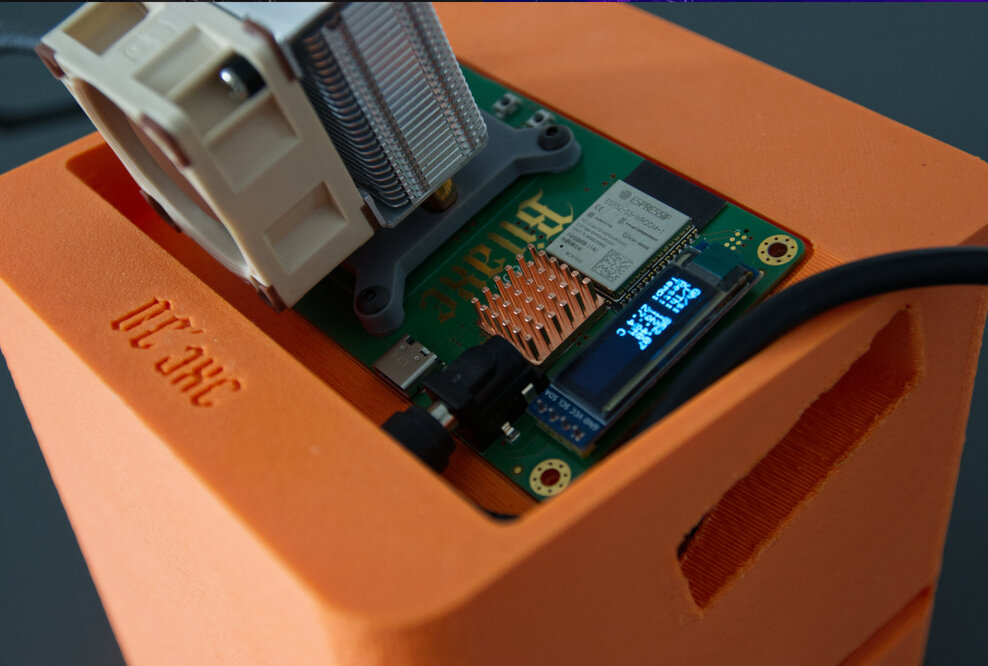
Mhz | Voltage | Avg. Th/s | J/Th | Power | ASIC Volt. req. | ASIC Volt. mes. | ASIC Temp | V. Reg Temp | Hint |
|---|---|---|---|---|---|---|---|---|---|
400 | 1,150 | 0.816 | 9,81 | 10,3 | 1,15 | 1,11 | 23,3 | 33,0 | 0.5 h run |
525 | 1,150 | 1.070 | 10,39 | 13,2 | 1,15 | 1,11 | 28,6 | 38,0 | 0.5 h run |
596 | 1,200 | 1.220 | 14,27 | 16,7 | 1,20 | 1,16 | 34,6 | 42,0 | 0.5 h run |
625 | 1,250 | 1.270 | 14,47 | 20,4 | 1,25 | 1,22 | 39,1 | 47,0 | 0.5 h run |
650 | 1,300 | 1.330 | 12,79 | 23,4 | 1,30 | 1,26 | 45,8 | 52,0 | 0.5 h run |
675 | 1,325 | 1.380 | 18,60 | 26,6 | 1,32 | 1,29 | 48,8 | 57,0 | 1,5 h run |
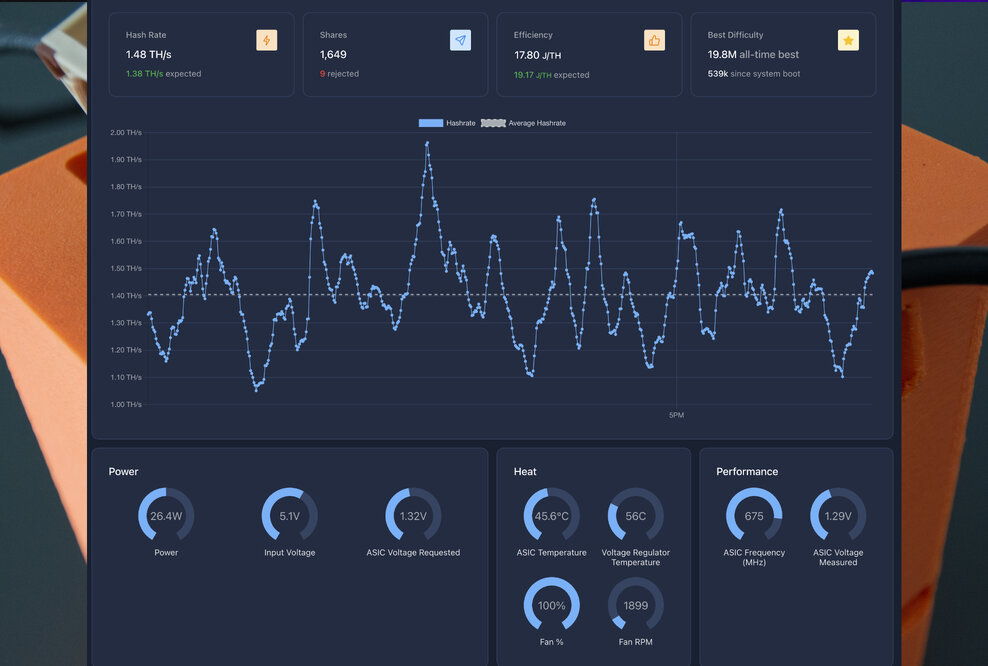
Yes, that's exactly how I looked when I tested this setup and just couldn't believe my eyes. And we're still talking about voltages and clock rates that have not been optimised in detail. The boost is simply incredible... the Gamma simply delivers extremely well when it's well cooled.
Curious about the OC'axe copper combination?
OC'axe Boost: 139.5g copper with Noctua NF-A6x25 5V PWM
I was so bullish about this combination at the time of the test, as if I were experiencing Christmas, my birthday and a lottery jackpot all at once. For now, I won't write much about it, see for yourself.
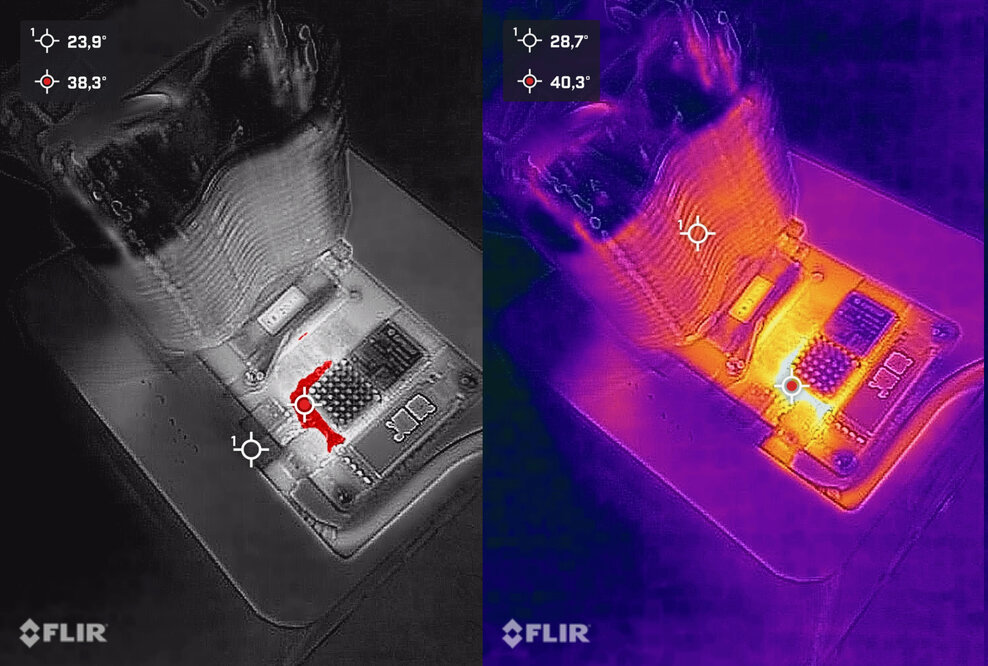
Mhz | Voltage | Avg. Th/s | J/Th | Power | ASIC Volt. req. | ASIC Volt. mes. | ASIC Temp | V. Reg Temp | Hint |
|---|---|---|---|---|---|---|---|---|---|
400 | 1,150 | 0.816 | 11,26 | 10,2 | 1,15 | 1,11 | 15,6 | 33,0 | 0.5 h run |
525 | 1,150 | 1.070 | 9,38 | 12,2 | 1,15 | 1,11 | 18,5 | 37,0 | 0.5 h run |
596 | 1,200 | 1.220 | 11,22 | 14,7 | 1,20 | 1,16 | 23,3 | 40,0 | 0.5 h run |
625 | 1,250 | 1.270 | 11,05 | 16,9 | 1,25 | 1,22 | 24,8 | 44,0 | 1 h run |
650 | 1,300 | 1.330 | 13,52 | 19,2 | 1,30 | 1,26 | 26,3 | 47,0 | 0.5 h run |
675 | 1,325 | 1.380 | 11,48 | 20,9 | 1,32 | 1,29 | 28,7 | 49,0 | 0.5 h run |
Sorry if I write it like that, but these values are simply out of this world.
This is just crazy!
Here, too, I thought of an error, which I have learned in my life: if something sounds too good, it can't be good. Here, however, it is the absolute opposite. I really can't put it into words at this point, I hope you can feel my emotional journey at this point as well.
Summary
Is the Bitaxe Gamma with the latest BM1370 in its fourth generation recommended?
- Absolutely yes.
Is there anything that needs to be considered?
- Absolutely yes.
The cooling solution chosen for the stable operation of the Gamma is simply essential. The tendency was already observed with the Bitaxe Supra with the BM1368, with the Gamma it is an absolute must. Without good cooling, you will quickly be disappointed and frustrated.
The Gamma is extremely temperature sensitive. With good cooling, the ASIC pushes even more incredible hash rates with incredibly good efficiency. This is the first Bitaxe model where you can push the Gamma to peak performance with cooling. The cooler, the faster, the more stable... Where the Supra still needed a certain operating temperature, the Gamma seems to be the opposite.
Gamma is an extreme temperature diva, but if you pay as much attention to her as she expects, you will definitely not be disappointed.
It is the fastest, most efficient and most stable Bitaxe we have had so far.
Stop! There was something else.
Trigger warning: the following information is not suitable for people who might start hypoventilating due to complete sensory overload.
Actually, I wanted to cover all the possible variants, advantages and disadvantages in this review and report on them calmly and relaxed. I didn't want to cover overclocking topics because it's just too early. A lot of optimisation and preparation is needed to be able to report on really solid facts.
But don't you also wonder if you could overclock the gamma a little. Just a little bit?
Hold on!
Mhz | Voltage | Avg. Th/s | J/Th | Power | ASIC Volt. req. | ASIC Volt. mes. | ASIC Temp | V. Reg Temp | Hint |
|---|---|---|---|---|---|---|---|---|---|
1.000 | 1,400 | 2.04 | 17,01 | 41,5 | 1,40 | 1,36 | 53,3 | 83,0 | 2 h run |
Breathe! Breathe! On a scale of 1 to 10, how *fucking* incredible is this? I'd say at least a 9000!

As I mentioned earlier, the Gamma reacts extremely to temperature when you cool it... You'll be as surprised as I am right now. I was actually about to put the Bitaxe Gamma on the OC'axe in the freezer to exaggerate even more.
But we'll have to postpone that until a later date. Everything really needs to be tested and optimised in detail, but the potential for the fourth generation of Bitaxe already exceeds anything we know.
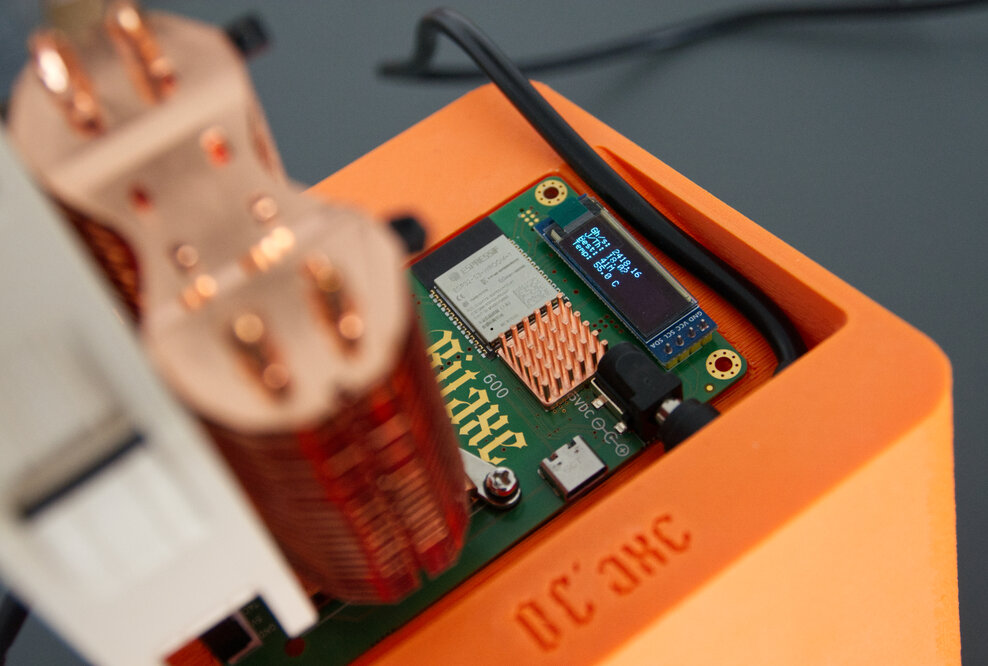
Even multi ASIC solutions are extremely surpassed by this performance data. I like the Bitaxe as a single ASIC best, it is extremely robust, now very mature and actually extremely cheap compared to multi ASIC solutions.
Overheating problems with the Bitaxe Gamma are therefore a curse and a blessing, be nice to the diva, it's worth it.
Knowledge transfer, services and products for the Bitaxe ecosystem. Primarily focused on cooling concepts and optimisations of hardware and software.

We manufacture infrastructure for Bitcoin miners - containers, PDUs, electrical distributions, and since 2024 - also Bitaxe.
Distributor Manufacturer Repair Service Reseller Services

Interested in digital progress, alternatives in finance, Bitcoin mining processes, in particular open source developments.




